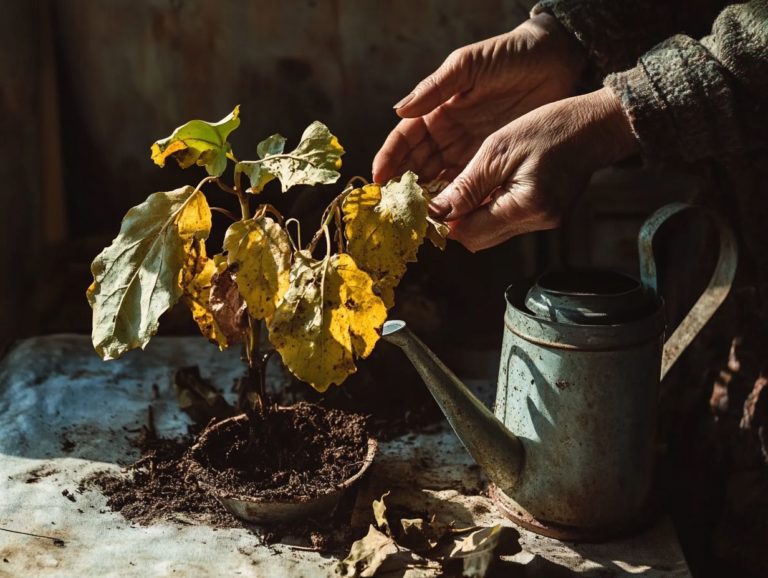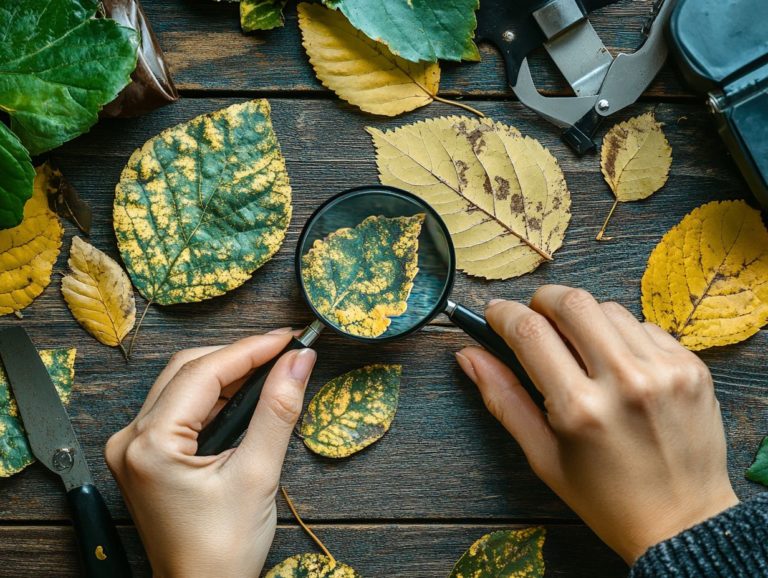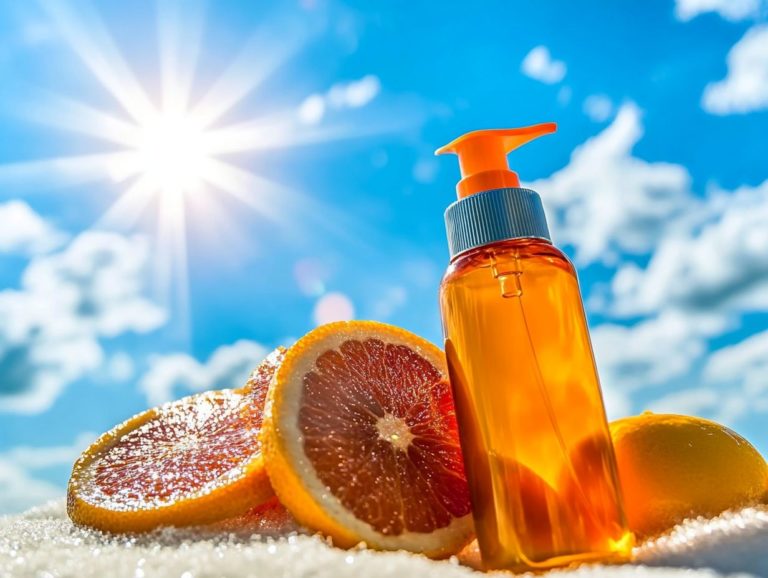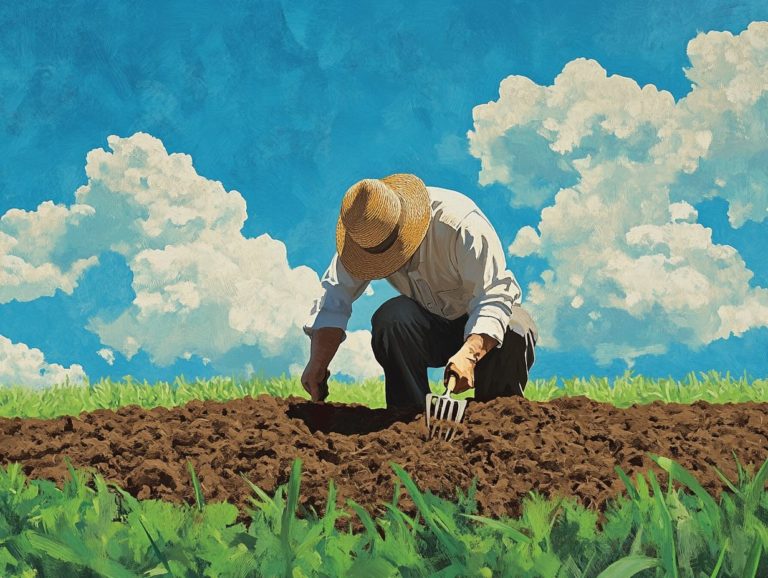Signs of Aging in Indoor Plants and Solutions
Indoor plants are remarkable. They infuse life and vibrancy into any space, but like all living beings, they do age over time. Understanding the aging process in your indoor plants is essential for maintaining their health and vitality.
This article covers factors that contribute to aging, highlights the physical changes you should be on the lookout for, and presents effective strategies to prevent or even reverse these effects.
It also tackles common challenges faced by aging plants and provides guidance on selecting the right varieties for enduring beauty in your home. Whether you re a seasoned plant lover or just beginning your journey, you ll discover valuable insights to help your green companions thrive.
Contents
- Key Takeaways:
- Understanding the Aging Process in Indoor Plants
- Signs of Aging in Indoor Plants
- Preventing and Reversing Aging in Indoor Plants
- Effective Strategies and Techniques
- Common Problems and Solutions
- Choosing the Right Plants for Your Space
- Frequently Asked Questions
- What are the signs of aging in indoor plants?
- What causes signs of aging in indoor plants and how can you diagnose plant issues?
- Can indoor plants be rejuvenated from aging?
- What solutions can help with signs of aging in indoor plants?
- How can I prevent aging signs in my indoor plants?
- Is it normal for indoor plants to show signs of aging?
Key Takeaways:
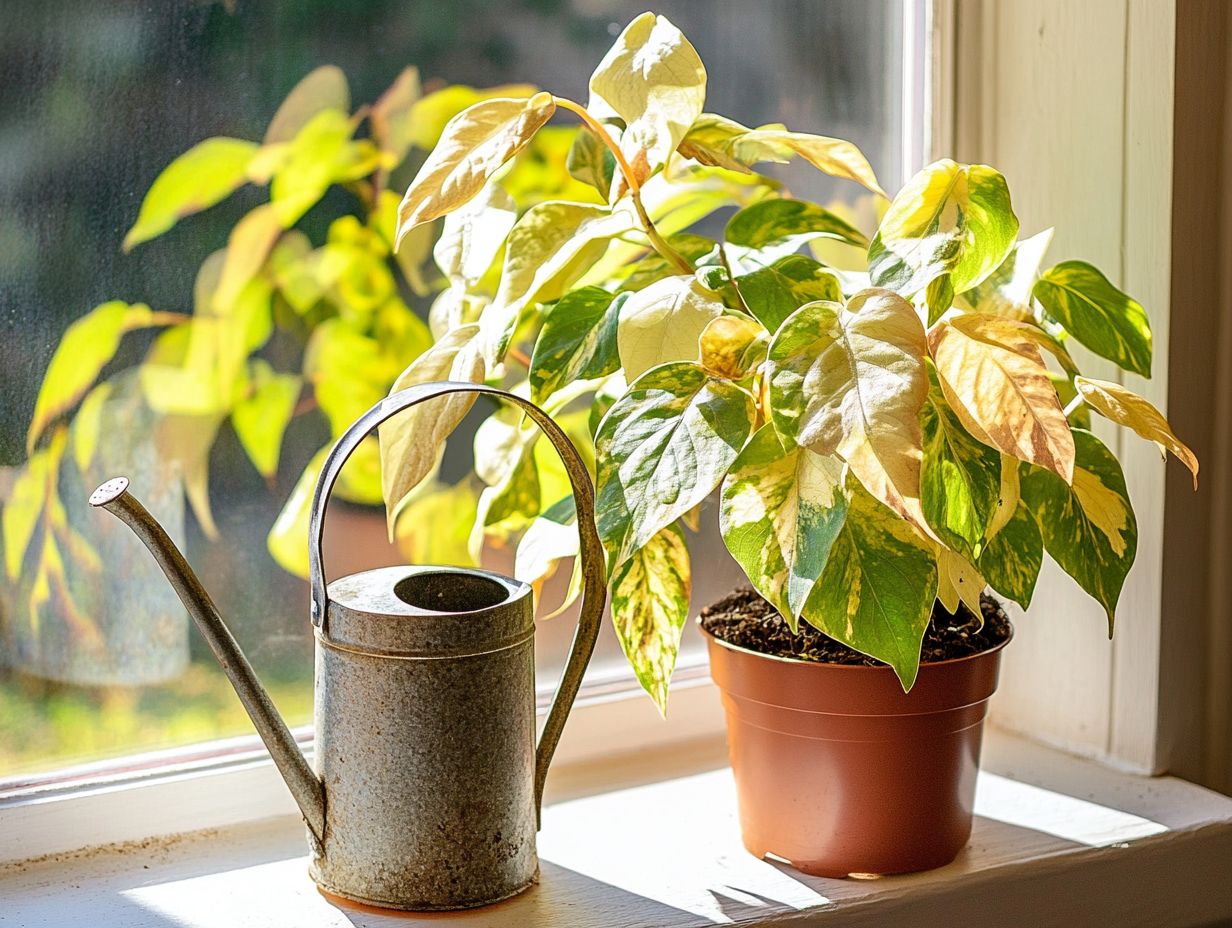
- Indoor plants age due to various factors such as light, water, and nutrients.
- Signs of aging in indoor plants include wilting, yellowing leaves, and slow growth.
- To prevent and reverse aging, provide proper care and consider repotting, pruning, and fertilizing as needed.
Understanding the Aging Process in Indoor Plants
Let’s explore how to keep your plants lively and healthy as they age! Understanding the aging process in your indoor plants is crucial for nurturing a vibrant plant collection.
Aging impacts various dimensions of plant health, from growth patterns and leaf quality to overall vitality. Elements such as sunlight exposure, humidity levels, and consistent watering are pivotal in determining how your indoor plants age.
By diagnosing plant issues early on, you can apply effective care strategies to prevent potential problems linked to environmental conditions. This ultimately enhances the longevity of your plants.
Factors That Contribute to Aging
Several environmental factors significantly influence the aging of your indoor plants, including humidity levels, sunlight exposure, and watering routines that can lead to weak or spindly growth.
A balanced approach to each of these elements is crucial for maintaining a vibrant indoor garden. For instance, sunlight is essential for the process plants use to make food from sunlight; however, too much exposure can scorch leaves, resulting in unsightly yellowing and browning, while too little can stunt growth, leaving your plants leggy and weak.
Managing a consistent watering schedule is vital. Overwatering may lead to root rot, evident through wilting leaves and a musty odor, while under-watering could cause drooping foliage, signaling dehydration.
Recognizing these signs will help ensure that your plants remain healthy and resilient against the passage of time.
Signs of Aging in Indoor Plants
Recognizing the signs of aging in your indoor plants is essential for prompt intervention and care. Symptoms like yellowing leaves, dropping foliage, and leaf curling can reveal underlying issues that need your attention.
Physical Changes and Symptoms
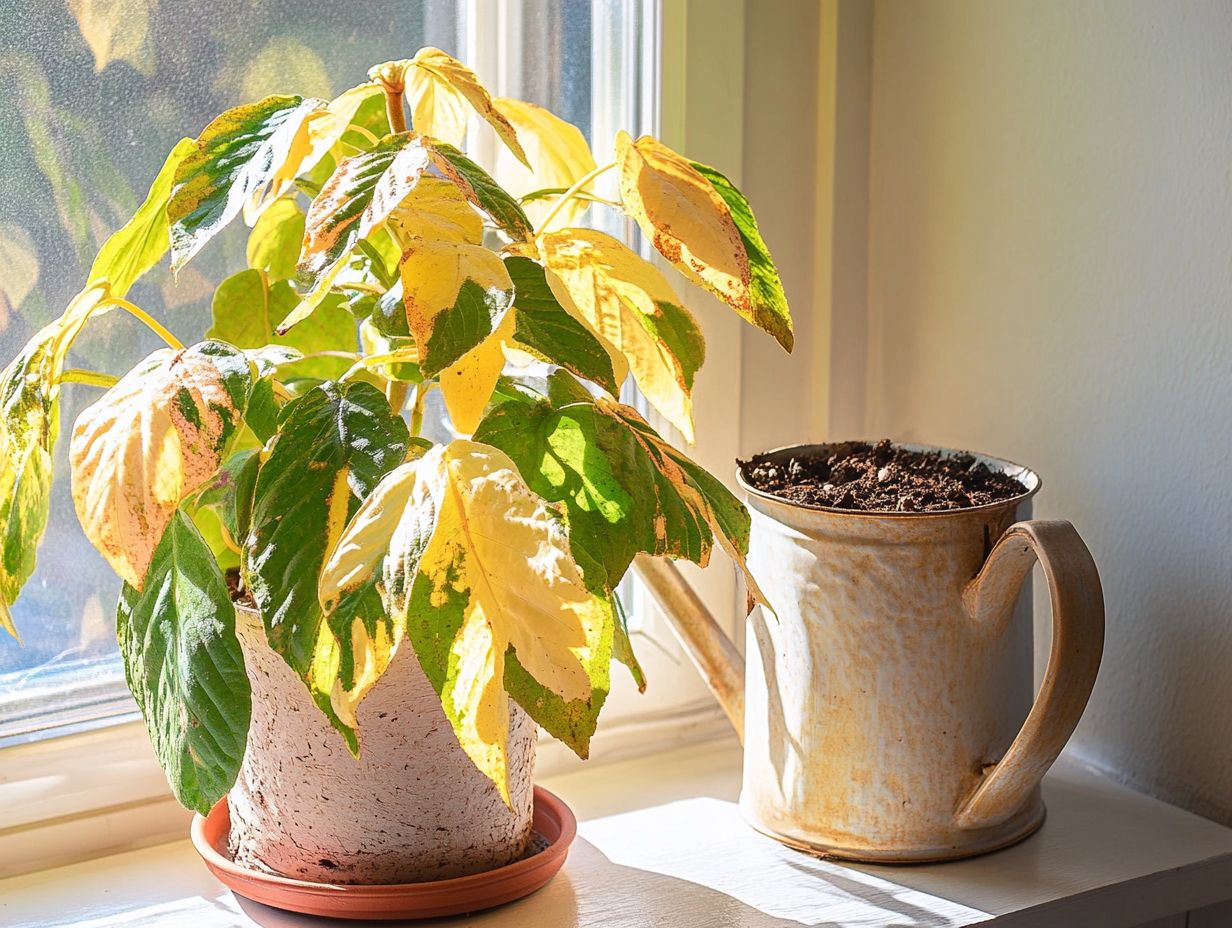
Physical changes in your indoor plants, such as yellowing leaves and dropping foliage, serve as crucial indicators of their overall health and aging process.
These transformations not only reflect the plant s maturity but also reveal underlying issues that may be compromising its vitality. For instance, if you notice browning leaf edges, it might be a sign of insufficient water or too much sunlight exposure. Stunted growth, on the other hand, could indicate nutrient deficiencies.
To effectively diagnose these problems, take a moment to closely observe your plant s appearance and its environmental conditions. Simple adjustments, like:
- Adjusting your watering routine
- Repositioning the plant to optimize light exposure
- Enriching the soil with appropriate fertilizers
can significantly enhance its health and longevity.
Preventing and Reversing Aging in Indoor Plants
You can prevent and even reverse the aging process in your indoor plants by employing effective strategies that center on proper care, nutrition, and environmental adjustments.
Act now! Start caring for your plants today and watch them thrive!
Effective Strategies and Techniques
Implementing effective strategies like neem oil treatment and insecticidal soap can significantly elevate the health and longevity of your aging indoor plants.
Understanding and adjusting humidity levels is key to nurturing your plants. Consider using a hygrometer, a device that measures humidity, to monitor moisture content. This can guide you in deciding whether a humidifier or pebble tray is necessary to create the perfect environment.
Ensuring your beloved plants receive the right amount of light is crucial. This might mean moving them closer to windows or using grow lights for those that crave more illumination.
Stay proactive by checking soil drainage regularly and refreshing the potting mix. This can enhance nutrient uptake, allowing your aging plants to rejuvenate and flourish.
Common Problems and Solutions
As an indoor gardener, you may face various challenges, from root rot and fungal diseases in your houseplants to pest infestations. Tackling these issues requires effective plant health checks, enabling you to devise the best solutions for maintaining your indoor garden’s vitality.
Addressing Common Issues in Aging Plants
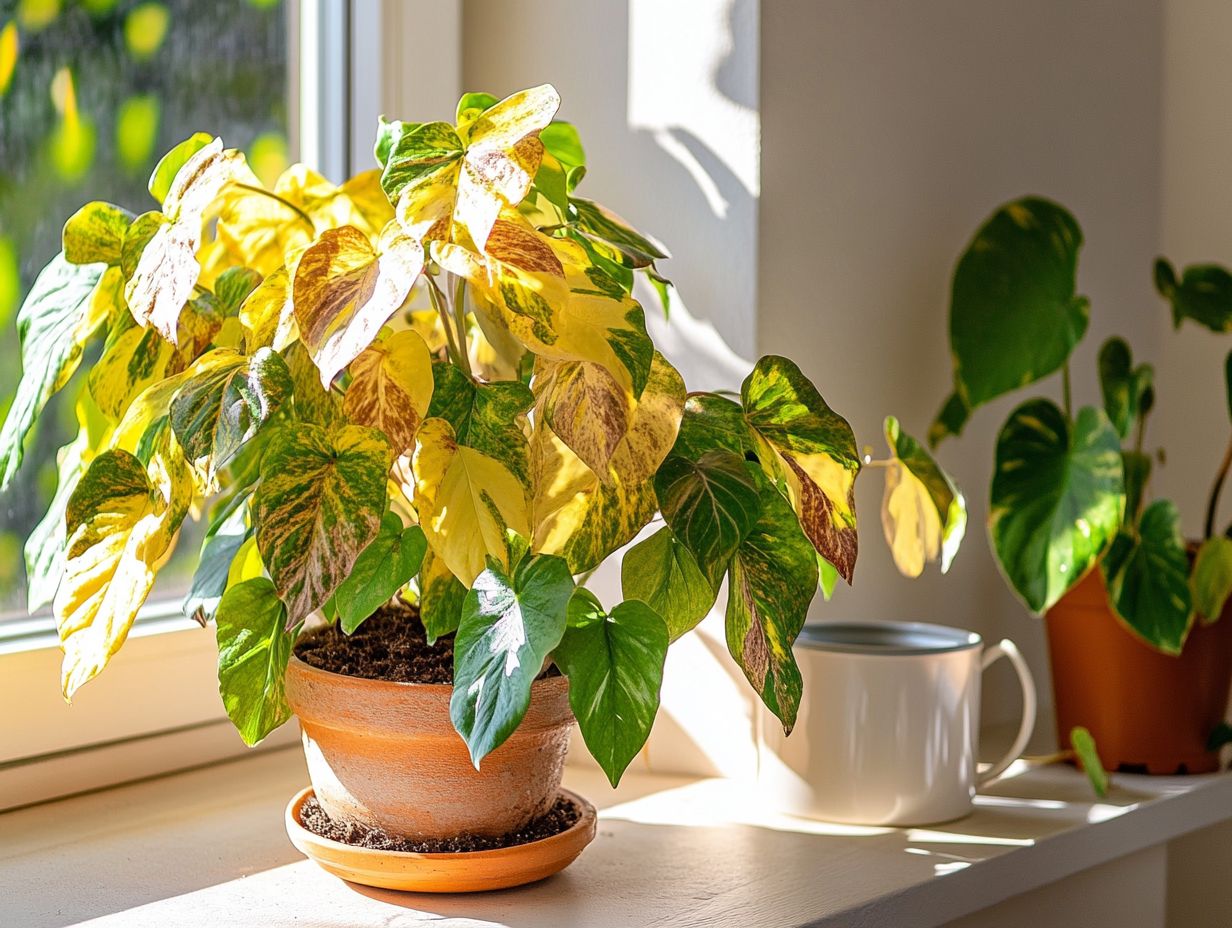
Addressing common issues in aging plants involves keenly identifying symptoms that compromise plant health and implementing appropriate treatments.
You may notice visible signs of distress, such as leaf curling or a sticky residue on leaves. These could indicate pest infestations or underlying environmental stress. Regularly inspect foliage and stems for these symptoms, as timely intervention can significantly improve the situation.
For example, the presence of aphids or spider mites can lead to leaf curling. A sticky substance might hint at their excretions. Employing pest management strategies like neem oil or insecticidal soap is vital for alleviating these problems. Neem oil disrupts the life cycle of pests without harming the plants, while insecticidal soap suffocates soft-bodied insects.
Understanding how factors like humidity, temperature fluctuations, and over-fertilization can worsen these issues enables you to take a holistic approach to plant health, including recognizing signs of nutrient deficiency in indoor plants.
Choosing the Right Plants for Your Space
Selecting the perfect plants for your space is crucial for maintaining the vitality and longevity of your indoor collection. Each plant has its own distinct care needs and light preferences, making thoughtful choices essential for their flourishing.
Factors to Consider for Longevity
When considering the longevity of your indoor plants, you can’t overlook factors like proper nutrition, humidity levels, and sunlight exposure.
Achieving that perfect balance requires realizing that plant nutrition goes beyond occasional feeding. It’s about selecting the right fertilizers tailored to specific plant types and growth stages. Maintaining optimal humidity levels is also essential; consider placing a small humidifier nearby or grouping your plants together to create a cozy microenvironment.
Sunlight exposure plays a critical role as well. Rotating your plants weekly ensures they receive light evenly, preventing them from leaning toward one side. By recognizing how these factors interact, you can create a thriving indoor garden where your plants not only survive but truly flourish, enriching your space with their vibrant presence. If you’re unsure about the health of your plants, know when to worry about your indoor plant to keep them at their best.
Frequently Asked Questions
What are the signs of aging in indoor plants?
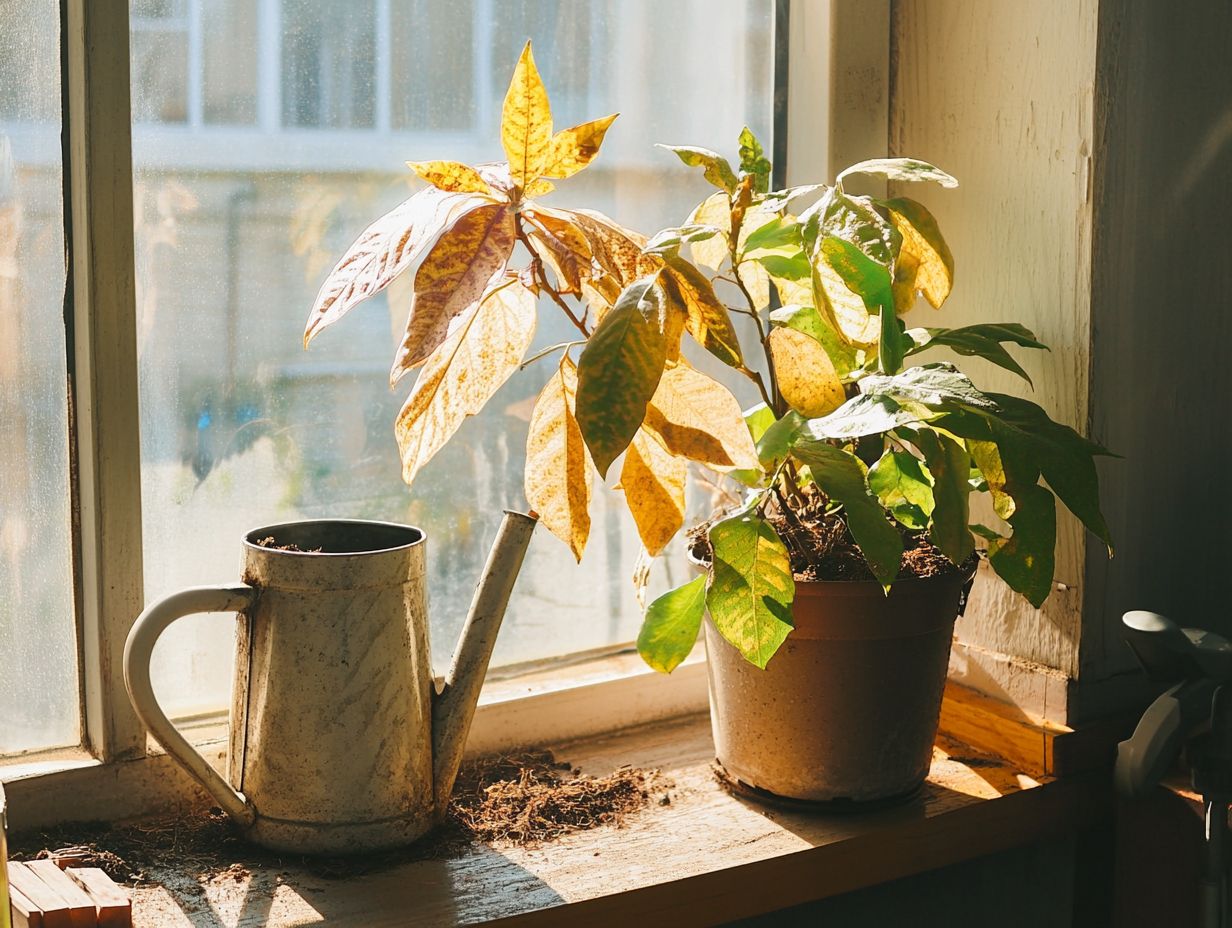
- Yellowing leaves
- Stunted growth
- Wilting
- Overall decline in health and appearance
If you found this information helpful, explore more resources to elevate your indoor gardening skills!
What causes signs of aging in indoor plants and how can you diagnose plant issues?
Indoor plants can age for several reasons. Common causes include poor soil nutrients, not enough sunlight, overwatering, and when roots have no space to grow.
Can indoor plants be rejuvenated from aging?
Absolutely! With the right care, your indoor plants can bounce back to health and vigor. This often involves repotting, adjusting your watering and lighting habits, and adding the right nutrients.
What solutions can help with signs of aging in indoor plants?
To address aging signs, repot into fresh soil. Use well-drained soil, fertilize with balanced nutrients, ensure adequate light, and prune any damaged leaves.
Keep an eye out for fungal diseases or plant pests while caring for your plants.
How can I prevent aging signs in my indoor plants?
Preventing aging requires proper plant care. Make sure they get enough light and nutrients, avoid overwatering, and check regularly for pests and diseases.
Is it normal for indoor plants to show signs of aging?
Yes, it s completely normal! Indoor plants, like all living things, will show some signs of aging. Regular care can minimize these signs, allowing your plants to thrive for years.
Stay vigilant and treat any plant problems promptly to keep them healthy!


